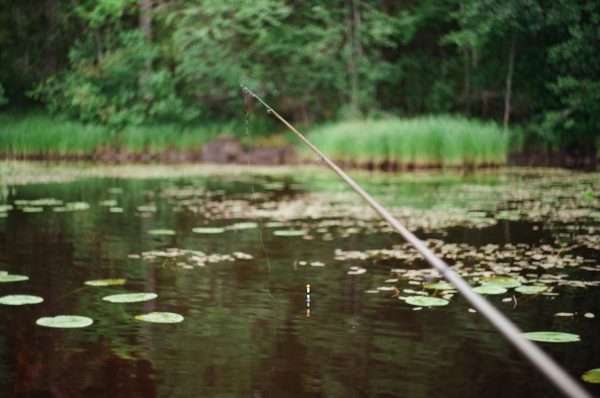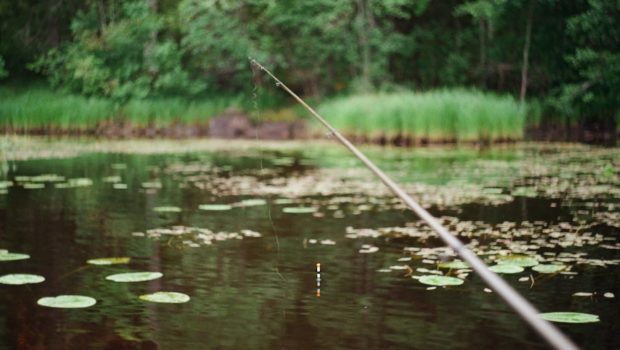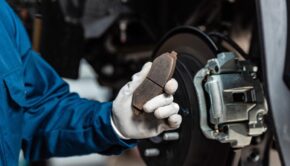Your Ultimate Guide to Finding a Perfect Fishing Spot Using a Fish Finder
Fishfinders have made it easier to find the fish in the water, but it hasn’t taken the challenge and excitement out of catching the fish. Anglers still have to choose the right bait and tackle to lure and catch the fish.
The other challenge Australian Sportfishing Charters have how to interpret the data they see on the fish finder screen. In the beginning, it can be confusing as anglers aren’t sure if they’re looking at floating wood, fish or vegetation.
But with some patience, some tips, and practice, anglers will be able to tell the difference between fish, solid structures and possible hazards in the water.

Photo by Stepan Ivanov on Unsplash
How a Fish Finder Works
A fish finder is a Sonar device that sends sound waves out in a pulse into the water, which will expand in the shape of a V or a cone. These sound waves will bounce off the bottom, rock formations, vegetation and fish, reflecting back to the fish finder.
The fish finder will then measure the time it took for the sound to travel down, hit objects and then be reflected to the device. It then translates this information into data that can be used, like the depth of objects, the size of objects and the shape of the bottom.
All of this information is then displayed on the LCD screen of the fish finder for anglers to read.
Learn to Read the Fish Finder
If you have a fish finder that is using Fish-ID Technology, then this will make your fishing trip very easy. Fishfinders with Fish-ID Technology take the raw data and help you interpret what anglers are looking at, so if there are fish in the water, they’ll pop up as little fish icons on your LCD Screen.
However, if you’re using a traditional fish finder, then it’ll take some practice to interpret what you see on the screen.
What You See on the Traditional Screen
When you look at the screen, you’ll notice that all stationary objects will be indicated as lines, while anything moving will be an arch. Fish are often moving and are represented as arches. So how do you tell if you have a big fish? Look at the arch’s width, and a thicker arch means that it’s a bigger fish.
The length of the arch doesn’t necessarily mean that you have a big fish, as short arches could signal a big fish that’s not moving much. The more you use a fishfinder, the easier it will be to tell the difference.
It can also be hard to tell the difference between solid structures and vegetation at first. Vegetation is usually closer to the bottom, where fish tend to be suspended in the water. If you see little dots on the fish finder screen, then this could be a cluster of baitfish.
Certain fish species like bluegill or crappie may be reflected as a dot on the screen as opposed to arches or lines.
Small fish like crappie and bluegill may identify in the same way. These types of fish may appear as dots on the fish finder display instead of lines.
Types of Underwater Structures
Weeds and vegetation can be challenging to identify at first as it can be displayed as vertical lines or spotter returns. Depending on the type of fish finder you have, the plants can be shown in the color green or purple as the plants will send a different frequency to the sonar.
Some fish species like catfish and carp leave depressions on the bottom, and anglers will be able to identify them by the little “v-shape” dips that you see on the contour of the bottom. The dip could be an excellent place to drop a line.
Anglers may find spotting points easier, but they would need to change how they use the fish finder for more accuracy. When you start scanning with sonar, anglers should begin with a wide beam and then switch to a narrow beam. The fish finder will then be able to identify all shelves, slight drop-offs and humps.
How to Use This to Find the Perfect Fishing Spot
According to the best fishing charter in Tampa, knowing where the fish are can be the difference between an angler catching a trophy fish or having no bites. Before you head to your fishing destination, be mindful about what time of year it is and then decide what fish you want to target.
Using your fish finder, scope out the depth of the water and pay attention to the temperature as you move along. Then map out where the vegetation is, the contours of the bottom and where the rock structures are.
The temperature of the water will help you to find where the fish are. If you’re looking to target Trout, Pike or Muskies, then you’ll find them in water where the temperature is between 52 to 64 degrees Fahrenheit.
If you’re looking to catch Largemouth bass, then you’ll find them in shallow water at a water temperature between 55 to 65 degrees Fahrenheit. Largemouth bass also love to hang around drop-offs, weed beds, floating vegetation and rocky structures.
Having mapped out an area, you can use your fish finder and head to the shallow water where there’s plenty of vegetation and cast.
Use Your Chartplotter to Mark Good Spots
One of the best features of a fish finder is the Chartplotter! As you’re mapping out your fishing area, you can mark potential fishing spots on your Chartplotter so that you can come back to it later.
Some fish finders may have a separate Chartplotter; in this case, you can mark a waypoint on the chart plotter of any identified fishing hot spots.
Conclusion
Fishing may be about patience, but that doesn’t mean having to sit on a boat hoping that the fish will swim into your bait. Patience is about the battle that starts when the fish is on the hook and honing your skills to reel that trophy fish in.
Using a fish finder helps you to get to the action quicker, put your skills and knowledge to the test with your jigging skills. A fish finder also helps you to map your favorite fishing locations as well as save locations so that you can come back to fish another day.
















